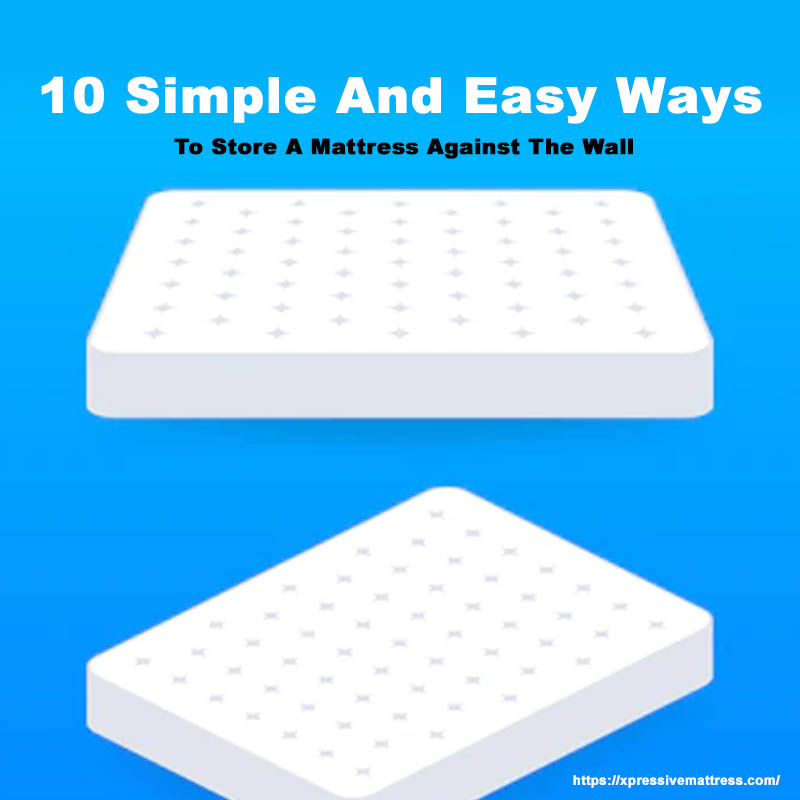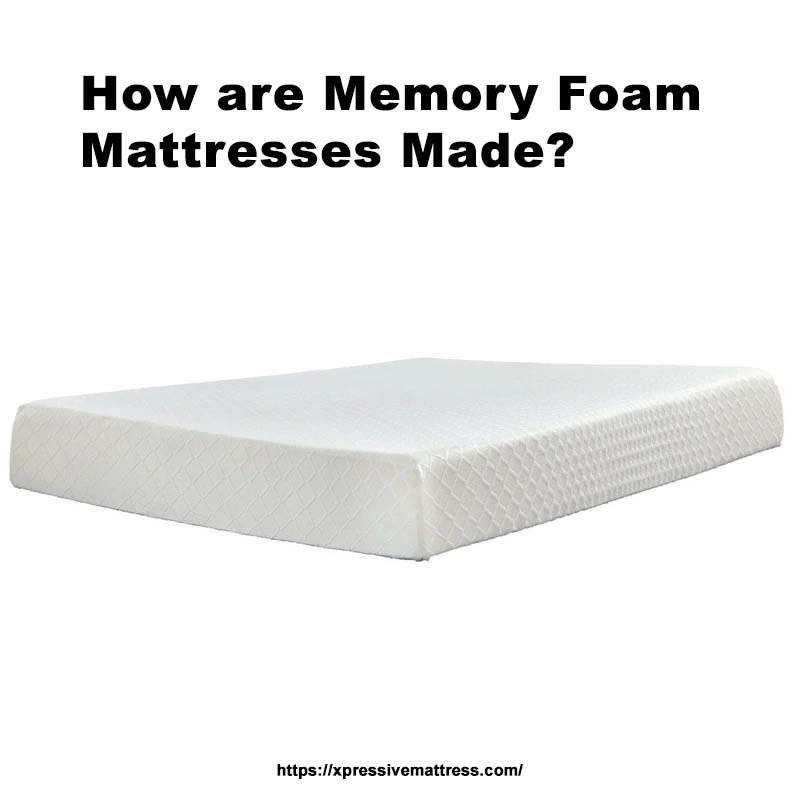It’s important to know how to tell if a mattress is bad.
A good quality mattress can make all the difference in getting a restful night of sleep, while an old or worn-out one may cause discomfort and even health problems.
- You wake up feeling stiff and sore.
- Your partner complains about being uncomfortable during the night. Here are some signs that it might be time for you to replace your current bed:
- There are visible lumps or indentations on the surface of your mattress.
- You notice dust mites, mold, mildew, or other allergens present inside/on top of your bedding. It has been more than 8 years since you bought it (the average lifespan of most mattresses).
Investing in a new high-quality mattress will not only improve comfort levels but also help promote better overall physical well-being!
What Are The Signs Of A Worn-Out Mattress?
A worn-out mattress can be a real nuisance.
It’s important to recognize the signs of an old, tired mattress, so you know when it’s time for a replacement:
- Sagging or lumpy surface – If your bed is sagging in certain areas and feels uneven, this could mean that its internal structure has weakened over time.
- Uncomfortable sleeping position – You may be tossing and turning more than usual due to discomfort caused by springs poking through the fabric or other irregularities on the surface of your mattress.
- Allergies/asthma flare-ups – Dust mites accumulate inside mattresses as they age, which can cause allergies and asthma symptoms such as sneezing, and coughing. Even if you don’t have any existing conditions!
Other signs include:
- Loss of support – Your body needs proper support while resting. Without it, muscles become strained, leading to aches and pains throughout the day after waking up from sleep.
- A good way to test whether there is enough cushioning left in your current one would be pressing down with both hands at different points across the top layer and then releasing them quickly (if indentation remains visible afterward, chances are high that material underneath has lost some resilience).
- Visible wear and tear – Stains, tears, or discoloration indicate how much use something had seen before being replaced.
These should not go unnoticed, especially since hygiene plays a major role here too!
How Long Should A Mattress Last?
A mattress should last between 7 and 10 years.
It is important to replace your mattress when it shows signs of wear, such as sagging or lumpiness.
Here are some tips for making sure you get the most out of your mattress:
- Rotate it every 3-6 months – this helps even out any indentations that may have formed over time.
- Use a waterproof protector on top – this will help protect against spills and stains.
- Vacuum regularly – dust mites can accumulate in mattresses, so regular vacuuming keeps them at bay.
- Don’t jump on the bed! This puts extra strain on springs which could cause damage over time.
If you want to extend its life further, consider investing in a quality memory foam or latex model with good support features like pocketed coils or zoned layers.
These types are more durable than traditional spring models and provide better comfort!
How Do I Check If My Mattress Needs To Be Replaced?
Checking if your mattress needs to be replaced important for a good night’s sleep.
Here are some tips on how you can tell:
- Look at the condition of your mattress – does it have any visible signs of wear and tear? Are there lumps, bumps, or indentations on the surface that weren’t there before? If so, then it may need replacing soon.
- Check for comfort – do you wake up feeling stiff and sore after sleeping on your current mattress? Does it feel too hard or too soft when lying down? If not, then maybe it’s time to invest in something new!
- Consider age – mattresses typically last between 5-10 years, depending on their quality and usage. If yours has been around longer than this, then it’s past due for an upgrade!
- Pay attention to allergies – dust mites accumulate over time which could trigger allergic reactions such as sneezing fits. Investing in a hypoallergenic option might help alleviate these symptoms (and give better nights’ rest!).
In conclusion, checking whether or not your mattress needs replacing isn’t always easy.
Still, by following these simple steps, you can determine whether now is the right time for an upgrade!
What Are The Indicators Of A Poor Quality Mattress?
A poor-quality mattress can have several indicators.
These include:
- Uncomfortable sleeping surface – the mattress may be too hard or soft, lumpy, and uneven.
- Poor support – it won’t provide adequate back and neck support for your body type.
- Sagging/dips in the middle – this is caused by inadequate padding layers that don’t hold up over time.
- Excessive noise when you move around on it – squeaking springs indicate low-quality materials used to make the bed frame.
Additionally, if any chemical smell comes from your mattress, this could also indicate its inferiority.
Finally, mattresses with short warranties (less than 10 years) usually signify lower-quality products too!
How To Evaluate The Comfort And Support Of A Mattress?
Evaluating the comfort and support of a mattress is an important step in finding one that meets your needs.
Here are some tips to help you make sure it’s just right:
- Test out different mattresses by lying down on them for at least 10 minutes, paying attention to how they feel against your body.
- When comparing models, consider factors like firmness, thickness, material type (memory foam or coil spring), and motion transfer.
- Ensure enough cushioning around pressure points such as hips and shoulders. So you don’t wake up with aches or pains from sleeping too long in one position without shifting positions throughout the night.
- Look for features like adjustable bases, which can be used to customize levels of softness/firmness depending on individual preferences.
- This will allow two people sharing a bed more control over their side-by-side sleep experience!
Finally, ask yourself if the mattress provides adequate back support while being comfortable.
After all these considerations, it should provide comfort and proper spinal alignment during restful sleep!
What Are The Effects Of Sleeping On An Old Or Uncomfortable Mattress?
Sleeping on an old or uncomfortable mattress can have several negative effects.
These include:
- Poor sleep quality – An old, lumpy mattress may cause you to toss and turn throughout the night, leading to poor-quality sleep that leaves you tired in the morning.
- Back pain – A worn-out mattress won’t provide enough support for your body while sleeping, which could lead to backaches and other aches and pains when waking up each day.
- Stress levels increase – Not getting adequate restful sleep due to an uncomfortable bed. It will leave you more stressed during the day and make it harder for your mind and body to recover from daily activities like work or exercise.
- Allergies worsen – Dust mites accumulate over time in mattresses causing allergies such as asthma symptoms to become worse if not replaced regularly with new ones every few years, depending on usage frequency. Important facts about replacing mattresses are:
- Mattresses should be changed at least once every 8-10 years. Memory foam beds last longer than traditional spring coil models.
- The firmness level is important when choosing the right type of bedding material (soft/medium/firm).
In conclusion, having a comfortable place where we can get good quality restorative sleep is essential for our overall health.
So buying a high-end durable model might save us long-term money by avoiding medical bills associated with chronic conditions caused by the lack thereof!
How To Determine If Your Mattress Has Any Defects Or Issues?
To determine if your mattress has any defects or issues, there are a few things you should look for:
- Check the seams and edges of the mattress to ensure they’re not fraying or falling apart.
- Look at all sides of the bedding material (mattress cover) for signs of wear, such as tears, rips, and stains.
- Feel around on top and underneath your mattress to check that it is firm enough.
- Ensure no lumps have formed in certain areas due to uneven weight distribution.
- Inspect both ends carefully – especially where headboards attach -for sagging spots that indicate structural damage from long-term use.
- Check inside corners/edges near the footboard area, too, since this part often gets neglected when flipping mattresses regularly but may be prone to developing weak points with age.
- Look out for discoloration caused by mold growth, mildew buildup, and water leakage ., which could signal an underlying issue like poor ventilation leading to moisture accumulation within layers beneath surface layer(s).
- Finally, remember that even though most manufacturers offer warranties against manufacturing defects, these don’t always cover normal wear and tear, so keep track of how old yours is before deciding whether replacement might be necessary!
In Conclusion: How To Tell If Your Mattress Is Bad?
In conclusion, it is important to know if a mattress is bad.
Several signs, such as sagging or lumpiness, can indicate when a mattress needs replacing.
An unpleasant odor.
And visible wear-and-tear-like tears in the fabric.
It’s also wise to consider factors such as the age of the mattress (generally 8 years) and whether you’re experiencing any physical discomfort while sleeping on your current bedding. Investing in quality sleep products will ensure better rest for many nights ahead!



